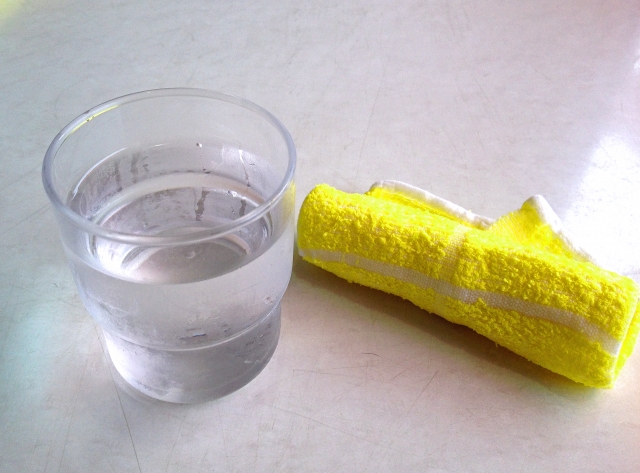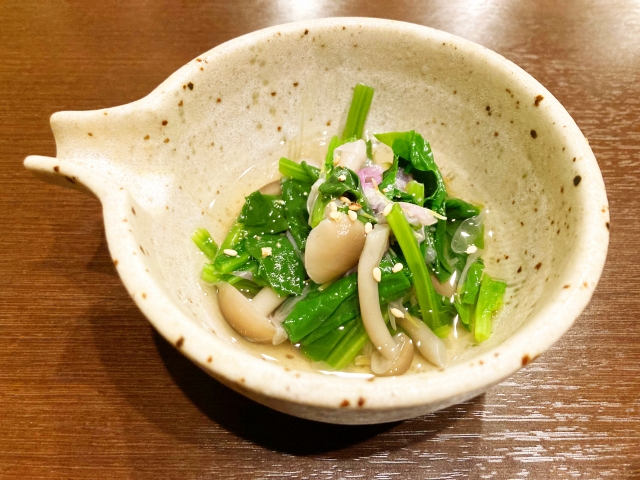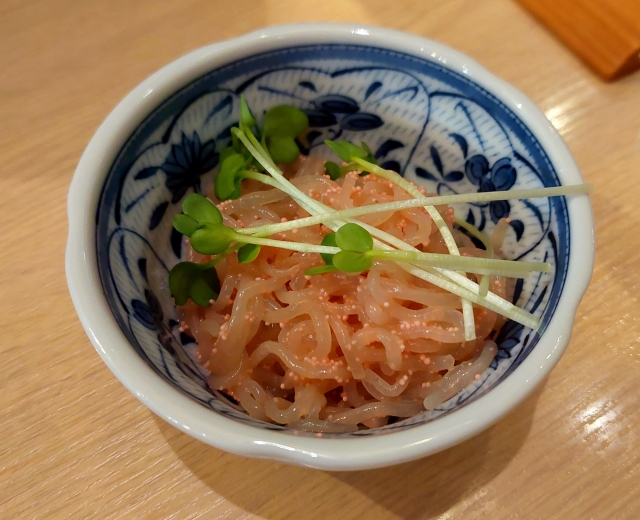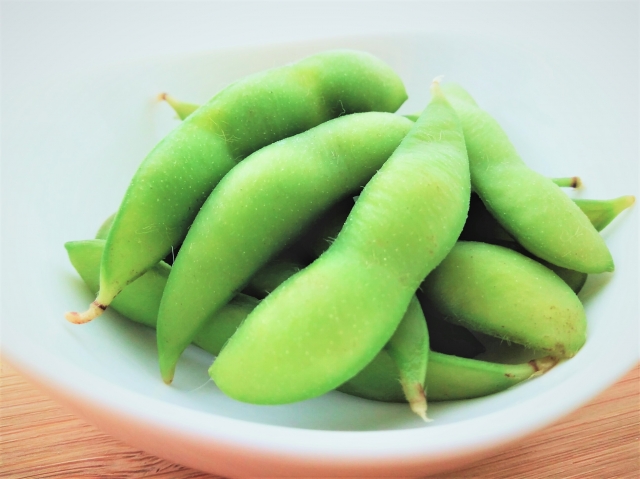In Japanese restaurants, you’ll get free water, tea, and towels even if you don’t order them. And at izakayas, you’ll get free water, tea, and towels even if you don’t order them.
Japanese people understand this, but first-time customers and foreign tourists seem to be surprised when they think they’re free but later realize that there’s a charge for the otoshi.
The difference between free and paid appetizers
Free water, tea, and towels are free services not only found in izakayas, but in many other restaurants in Japan. On the other hand, otoshi is a custom found mainly in izakayas and small restaurants that serve alcohol, so it may be confusing.
Otoshi is a small appetizer served at Japanese izakaya.
Free water, tea and towels

These are provided as a service to customers and generally do not incur any charges.
They are offered at a wide range of eating and drinking establishments, including restaurants, cafes, and ramen shops.
They are considered basic services that allow customers to enjoy their meals and drinks.
An unordered, paid appetizer
Otoshi is mainly served at izakayas and small restaurants that serve alcohol.
It is a simple dish that you can enjoy with your drink while waiting for your ordered food to arrive.
It also acts as a seat charge and service charge, and is almost always charged.
Otoshi also shows the restaurant’s hospitality.

Questions about “Otoshi” served at Japanese izakayas
The “Otoshi” served at Japanese izakayas is a custom that is often confusing for foreign tourists. We have summarized the reasons and various opinions.
What is Otoshi?
Otoshi is a small dish served at izakayas and other establishments while waiting for the food you ordered to be served. It also has the meaning of a seat charge and service charge, and in most cases there is a charge for it.
Main reactions of foreign tourists
Confusion and dissatisfaction
Many people are dissatisfied with the fact that dishes they did not order are brought out without their consent and that they have to pay for them.
In particular, they may feel suspicious if there is no explanation on the menu or the price is unclear.
Some people also say things like, “Why can’t I refuse?” or “It’s like they’re trying to force me to buy something.”
Understanding it as a cultural difference
Some people understand that it is a part of Japanese izakaya culture and accept it.
There are also positive opinions such as “It’s an interesting custom unique to Japan” and “It’s nice to be able to enjoy a small dish.”
Some people think that it’s not a problem as long as they get the information beforehand.
Questions about the price
Some people feel that the price of the appetizer is not commensurate with the content of the dish.
It is easy to feel dissatisfied, especially if the amount of food is small or if the food is not to their taste.
Problems with otoshi
Lack of explanation
Sometimes otoshi are not explained enough to foreign tourists.
If there is no explanation on the menu or no English translation, it is easy to get confused.
Unclear price
The price of otoshi may not be listed on the menu.
Some people are surprised when they find out the price for the first time when they pay the bill.
Atmosphere that makes it difficult to refuse
Some izakayas have an atmosphere that makes it difficult to refuse otoshi.
Some people find it difficult to refuse, especially if they do not speak Japanese.
Improvement measures
Clear explanations
Explain otoushi (contents, price, whether it can be refused, etc.) on the menu.
Also provide explanations in English and other languages.
Price display
Clearly state the price of otoushi on the menu.
Explain the price of otoushi at the time of payment.
Option to refuse
Make it clear that otoushi can be refused.
Try to provide friendly service and don’t be upset if customers refuse.
Otoshi is a part of Japanese izakaya culture, but more careful explanations and consideration are needed to ensure that foreign tourists understand it.

Types of “Otoshi” served at Japanese Izakayas
The “Otoshi” served at Japanese Izakayas varies from restaurant to restaurant. Generally, the following are common.
Examples of Otoshi
- Edamame
- Hiya-yakko
- Tsukemono
- Salad
- Seafood salad
- Simmered dishes
- Delicacies (Shiokara, Chanja, etc.)
Depending on the restaurant, the contents may change depending on the day’s purchases, or they may serve elaborate Otoshi to highlight the restaurant’s unique characteristics.
Can I refuse an otoushi? Can I exchange it?
In general, it is difficult to refuse an otoushi. This is because it also includes the seating charge and service charge. However, depending on the restaurant, there are some cases where they will do the following:
In case of allergies
If you have allergies, tell the izakayas in advance and they may change your dish to a different appetizer or not serve you one at all.
In case of ingredients you don’t like
If there is an ingredient you don’t like, talk to the izakayas. Depending on the restaurant, they may change your dish to a different appetizer or remove the ingredient.
If you can choose the type of appetizer
Some izakayas allow you to choose from multiple appetizers.
Notes and summary regarding otoshi
Free water, tea, and wet towels are free services provided at many restaurants.
Otoshi is a small dish served mainly at izakayas.
In most cases, there is a fee for otoshi. The price varies depending on the restaurant.
For the contents and price of otoshi, check with the staff or see if it is listed on the menu.
Otoshi is one of the Japanese izakaya cultures, and there are various types depending on the restaurant.
If you have any questions about otoshi, feel free to ask the staff.



コメント